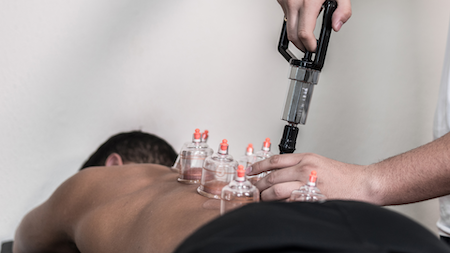Top 5 Breathing Exercises For A Panic Attack

A panic attack is an extreme form of anxiety. An estimated 2.7% of adults experience panic attacks yearly. Panic attacks cause you to feel afraid, faint, and shaky. Sometimes, you may also experience chest pains, trouble breathing, and a sense of impending doom. During a panic attack, breathing exercises are a great way to help you control your symptoms. This is because breathing is a natural way to relax. When your body feels relaxed, it automatically tells your mind that there’s no danger or problem–relieving your panic.
Breathing exercises are essential for calming down a panic attack fast. They should be practiced even when you are not experiencing a panic attack. Here are five simple breathing exercises to overcome your panic attacks.
1. Deep Relaxation Breathing
This is a simple breathing exercise that you can use anywhere, anytime. It involves breathing in and out of your nose on a count of 4 seconds. As you breathe in, make sure your stomach moves outwards to allow more room for air in your lungs. When you breathe out, ensure that your stomach goes back to its normal position and that there are no pauses between breaths. It would help to keep your mouth closed while practicing this breathing exercise.
2. Five-Second Breathing
The second breathing exercise we’ll go over is called Five-Second Breathing. 5-Second breathing is a simple breathing exercise that can help calm you down. It is easy to do and can help you quickly return to feeling like yourself again. Here is how to do It:
- Close your eyes and take a deep breath through your nose.
- Hold that breath for five seconds.
- Then slowly exhale through your mouth, counting to five seconds.
- Repeat this cycle until your panic attack feels lighter and you are relaxed.
3. Deep Ujjayi Breathing
The Ujjayi breathing exercise is popular in yoga, and it can help you calm down and deal with panic attacks. It is also a great way to practice mindfulness, enabling you to control your emotions and reduce stress. Here is how to do it;
- To start, make sure you’re sitting in a comfortable position. You can sit cross-legged on the floor or on a chair with your back straight.
- Place your tongue against the ridge behind your upper teeth and keep it there throughout the exercise.
- Breathe through your nose so the air reaches the bottom of your lungs. Fill up your lungs for a count of four.
- Then breathe out slowly through pursed lips, making a whooshing sound as you exhale for a count of four.
- Do this four times a row, then take two deep breaths to get back to normal breathing.
4. Alternate Nostril Breathing
Another great breathing exercise for panic attacks is alternate nostril breathing. This breathing technique is engaging and helps calm you down when you feel anxious or panicky. To do it:
- Place your right thumb over your right nostril and inhale through your left nostril for four counts.
- Close off your left nostril as you exhale through your right nostril for four counts.
- Release your right nostril and cover your left nostril as you inhale again through the same side for another four counts.
You should feel more relaxed and steadier when you’re done with this exercise.
5. The Laughing Breath
The Laughing Breath is a breathing exercise that helps you concentrate on the sound of your breath and helps to reduce anxiety. It is designed to help you change your breathing patterns, which can help you relieve some of the symptoms of panic attacks.
First, take a deep breath through your nose and fill your lungs with air. Then, exhale slowly through pursed lips like you’re whistling or laughing. Focus on making noise so it feels like your stomach muscles are engaged. Inhale again through your nose and repeat this pattern for about five minutes.
Conclusion
Deep breathing is one of the most effective ways to calm yourself down during a panic attack. It can help you control the episode and other symptoms of severe anxiety. You don’t have to be a yoga master or even a meditation expert—you just have to find a comfortable position and start doing it regularly.


Leave a Reply
You must be logged in to post a comment.